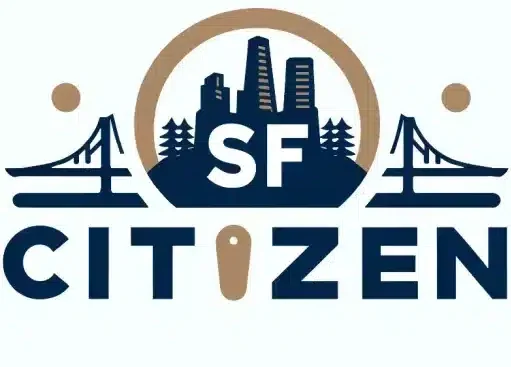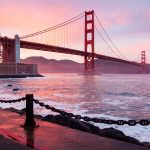The MacArthur Freeway (I-580) plays a crucial role in connecting San Francisco with Oakland, San Leandro, and the broader Bay Area. This strategic highway, along with major roads and bridges like the San Francisco-Oakland Bay Bridge (I-80), has significantly influenced urban development and transportation dynamics in the region. The interplay between the MacArthur Freeway and public transportation systems like BART has shaped commuter patterns and urban planning decisions for decades.
In This Article
Key Points
- The MacArthur Freeway (I-580) is a vital connector between San Francisco, Oakland, San Leandro, and the Bay Area.
- Major roads and bridges, such as the San Francisco-Oakland Bay Bridge (I-80), have greatly influenced urban development and transportation in the region.
- The MacArthur Freeway and public transportation systems like BART work together to shape commuter patterns and urban planning.
The MacArthur Freeway (I-580): A Vital Artery
The Route and Its Significance
The MacArthur Freeway spans 12.4 miles through Oakland, tracing the base of the Oakland hills from the San Leandro city limits to the San Francisco-Oakland Bay Bridge approach. This freeway serves as a critical commuter and freight corridor, facilitating regional traffic flow and connecting key cities in the Bay Area.
The MacArthur Maze: Navigating Complex Interchanges
The MacArthur Maze, a large freeway interchange near the east end of the San Francisco-Oakland Bay Bridge, is a crucial component of the I-580 system. This complex interchange connects I-580, I-880, and I-80, splitting Bay Bridge traffic into three freeways: the Eastshore (I-80/I-580), MacArthur (I-580), and Nimitz (I-880). Managing traffic within this interchange has been a significant challenge for transportation authorities, requiring innovative solutions to ensure smooth traffic flow.
Bridging Cities: The San Francisco-Oakland Bay Bridge
Engineering Marvel and Economic Catalyst
The San Francisco-Oakland Bay Bridge, an iconic structure connecting San Francisco and Oakland, holds great historical and architectural significance. The bridge has been a catalyst for economic development and regional connectivity, facilitating the movement of people and goods between these two major cities.
I-80 and Urban Connectivity
Interstate 80, which includes the San Francisco-Oakland Bay Bridge, links the Bay Area to the rest of California and beyond. This highway plays a vital role in handling commuter and freight volumes, with traffic patterns reflecting the bridge’s capacity to accommodate the region’s transportation needs.
Public Transportation and the MacArthur Freeway
BART: Bridging the Gap
The Bay Area Rapid Transit (BART) system complements the freeway network, offering an alternative mode of transportation for commuters. BART stations along the MacArthur Freeway corridor facilitate access to the highway and surrounding areas, helping to alleviate traffic congestion and improve overall connectivity.
Enhancing Road Safety and Accessibility
Caltrans and local authorities have implemented various initiatives to improve road safety along the MacArthur Freeway. These efforts include integrating urban greenways and pedestrian-friendly pathways with freeway infrastructure, creating a more accessible and sustainable transportation network.
Environmental and Social Considerations
Air Pollution and Health Implications
Communities along the MacArthur Freeway are exposed to air pollution, which can have significant health implications. Studies from the Bay Area Air Quality Management District (BAAQMD) have analyzed the impact of freeway emissions on local air quality, prompting discussions on measures to mitigate environmental health risks.
Urban Development and Gentrification
Freeway expansions and improvements have had a notable impact on local neighborhoods, such as the Laurel District and the Mills College area. The phenomenon of environmental gentrification, where infrastructure upgrades lead to rising property values and displacement of long-standing communities, has become a concern for urban planners and residents alike.
Future Directions: Sustainable and Inclusive Urban Planning
Reducing Environmental Impact
Strategies for minimizing air pollution exposure and enhancing road safety are essential for the future of the MacArthur Freeway and its surrounding communities. Mixed-use development, which combines residential, commercial, and recreational spaces, can promote sustainable urban growth and reduce the need for long-distance commuting.
The Role of Public Transportation in Shaping the Future
Expanding BART and other public transportation services has the potential to alleviate freeway congestion and create a more sustainable transportation network. By investing in pedestrian and cyclist-friendly corridors in freeway-adjacent areas, cities can encourage alternative modes of transportation and foster healthier, more livable communities.
FAQ
What is the MacArthur Freeway and why is it important?
The MacArthur Freeway (I-580) is a crucial highway that connects San Francisco with Oakland, San Leandro, and the broader Bay Area. It serves as a vital commuter and freight corridor, facilitating regional traffic flow and economic activity.
How does the MacArthur Maze function?
The MacArthur Maze is a complex freeway interchange that connects I-580, I-880, and I-80 near the east end of the San Francisco-Oakland Bay Bridge. It splits Bay Bridge traffic into three freeways and requires innovative traffic management strategies to ensure smooth traffic flow.
What role does the San Francisco-Oakland Bay Bridge play in the region?
The San Francisco-Oakland Bay Bridge is an iconic structure that connects San Francisco and Oakland, serving as a catalyst for economic development and regional connectivity. It facilitates the movement of people and goods between these two major cities.
How do public transportation systems interact with the MacArthur Freeway?
The Bay Area Rapid Transit (BART) system complements the MacArthur Freeway by offering an alternative mode of transportation for commuters. BART stations along the freeway corridor facilitate access to the highway and surrounding areas, helping to alleviate traffic congestion.
What are the environmental and social impacts of the MacArthur Freeway?
The MacArthur Freeway has environmental and social impacts on the communities along its route. Air pollution from freeway emissions can have significant health implications, while freeway expansions and improvements have led to concerns about gentrification and displacement in neighborhoods like the Laurel District and the Mills College area.

